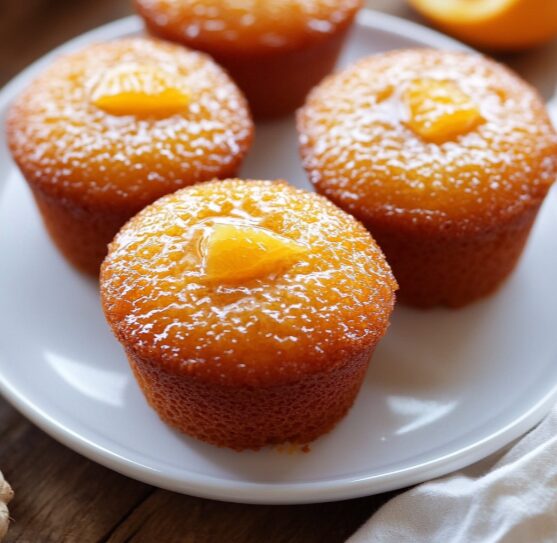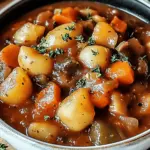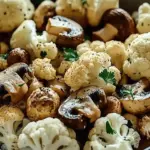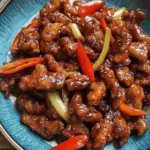Citrus and Spice: A Timeless Flavor Pairing
One of the most enchanting aspects of this recipe is the way it harmonizes the sharp, sunny notes of orange with the mellow, warming qualities of ginger. Orange zest and juice bring brightness and tang to the cakes, cutting through the richness and enhancing the overall balance of flavors. The zest in particular releases aromatic oils that fill the kitchen with an irresistible scent during baking, making these cakes as pleasing to smell as they are to eat.
Ginger adds a subtle kick that elevates the flavor without overpowering it. Ground ginger provides a mild warmth and earthiness, while fresh grated ginger, if used, delivers a livelier zing and slight sharpness that plays beautifully with the citrus. Together, orange and ginger create a layered flavor profile that feels both festive and comforting—a quality that makes these cakes ideal for cozy gatherings or seasonal celebrations.
Cinnamon, though optional, adds another dimension of spice, enhancing the ginger’s warmth and deepening the overall flavor. When included, it transforms the cake into a gently spiced treat perfect for cooler months and holiday tables.
Honey: A Natural Sweetener with Character
Honey plays a central role in these cakes, not just as a sweetener, but as a defining flavor element. Unlike granulated sugar, which offers pure sweetness, honey brings complexity, moisture, and richness. Depending on the variety of honey used, the cakes can take on different floral or herbal undertones—wildflower honey lends a delicate floral note, while orange blossom honey amplifies the citrusy theme.
Honey also contributes to the cakes’ tender crumb and golden finish. Its hygroscopic nature means it retains moisture, keeping the cakes soft and luscious even a day or two after baking. This makes them perfect for making ahead and storing for brunches, parties, or lunchbox treats.
Another benefit of using honey is its ability to create a slight caramelization on the crust of the cakes, giving them a slightly chewy, golden edge that contrasts beautifully with the soft interior. It’s an ingredient that enhances both the flavor and texture of the final bake.
A Simple, Foolproof Batter for All Skill Levels
The ease of preparation is another reason to love Orange Ginger Honey Cakes. The recipe is straightforward, requiring only two bowls—one for wet ingredients, one for dry. This simplicity makes it accessible to all levels of bakers and perfect for a spontaneous baking session.
The wet and dry ingredients are combined gently to avoid overmixing, which helps maintain the cakes’ light, fluffy structure. The use of either vegetable oil or melted butter provides flexibility; oil delivers a more tender crumb, while butter adds richness and flavor depth. Vanilla extract adds a subtle background note that ties everything together without competing with the dominant flavors of citrus and spice.
Because the cakes are baked in small molds, they cook evenly and quickly, developing a beautiful domed top and delicate golden crust. Once cooled, they can be enjoyed plain or dressed up depending on the occasion.
Perfect for Every Occasion
These honey cakes are the kind of treat that adapts effortlessly to a wide range of events and menus. Their subtle spice and gentle sweetness make them appropriate for breakfast spreads, afternoon tea parties, or elegant dessert tables. They can be served warm in the winter with spiced tea or coffee, or chilled in the summer with a spoonful of whipped cream and a sprig of mint.
For special occasions, a drizzle of orange glaze—made from powdered sugar and fresh orange juice—adds both flair and extra citrus punch. Alternatively, a swirl of Greek yogurt or a dollop of mascarpone with a light honey drizzle elevates them into a plated dessert worthy of any dinner party.
During the holiday season, they make wonderful edible gifts. Wrapped individually in parchment and tied with twine, these cakes carry the charm of thoughtful, homemade treats that are as delightful to receive as they are to eat.
Nutritious Elements and Adaptability
While these cakes are clearly a sweet treat, they also carry some wholesome benefits. The use of honey and orange juice means they rely on more natural sources of sweetness and flavor. Orange juice contributes vitamin C and antioxidants, while honey offers trace nutrients and antimicrobial properties.
The recipe can also be adapted to suit different dietary needs. For example, it can be made dairy-free by choosing oil over butter, and gluten-free flour blends can be substituted for all-purpose flour for those with gluten sensitivities. Those looking to reduce refined sugar further can skip the optional glaze or topping and enjoy the cakes in their natural simplicity.
Adding a handful of chopped nuts, such as almonds or walnuts, can provide crunch and added nutrition, while incorporating dried fruit like cranberries or dates can offer texture and natural sweetness. Each adaptation adds a new dimension while maintaining the core charm of the recipe.
Conclusion
Orange Ginger Honey Cakes are a delightful embodiment of balance—bright yet warming, simple yet nuanced, comforting yet refreshing. They showcase the beauty of using natural ingredients like citrus, honey, and ginger to create desserts that are both flavorful and nourishing. Their versatility, ease of preparation, and universally appealing flavor make them a go-to recipe for any occasion, whether it’s a festive brunch, a cozy tea time, or a holiday gift from the heart.
With their moist texture, aromatic profile, and elegant appearance, these little cakes feel like a hug in dessert form. They offer a break from overly rich or complicated desserts while still satisfying a sweet tooth in a memorable way. Once you’ve made them, they’re sure to become a staple in your recipe collection—an effortless way to bring a little sunshine and spice to any day.






